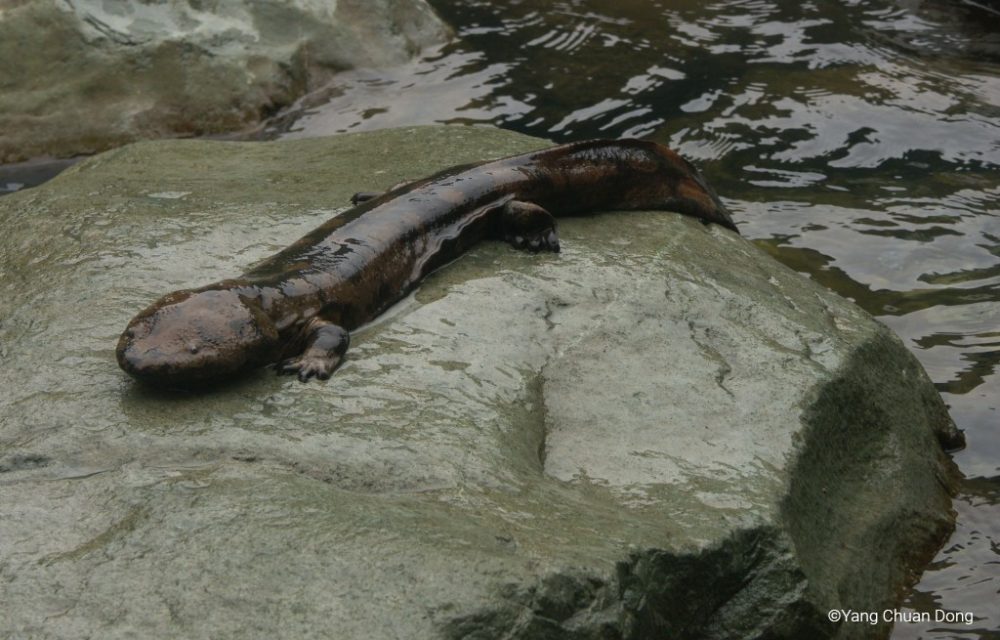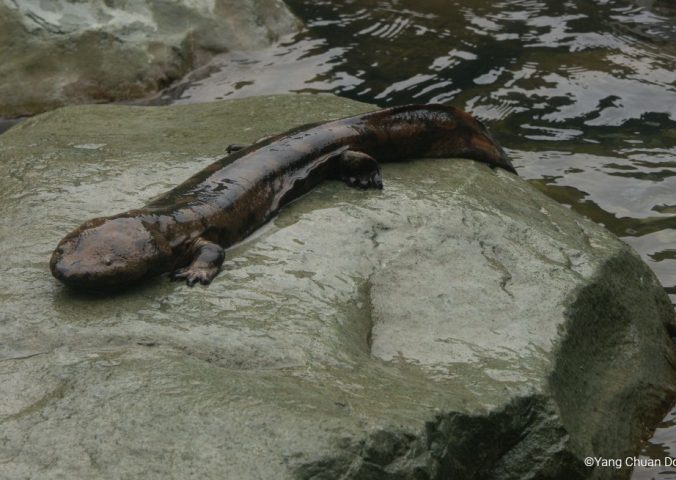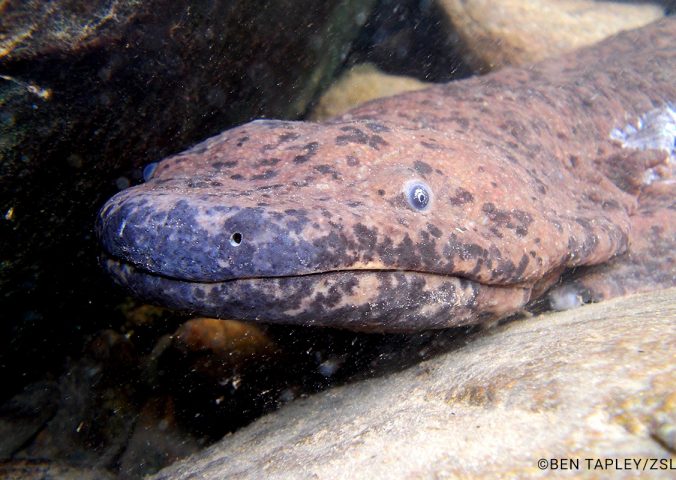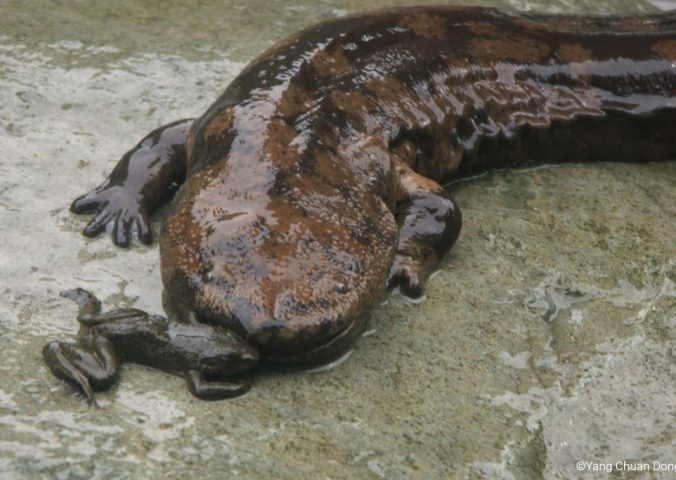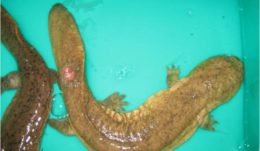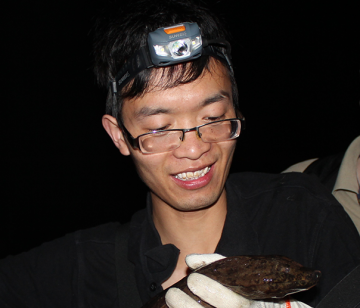About
The Chinese giant salamander is the world’s largest amphibian, growing up to 1.8 metres long, with a large tail comprising almost 60% of the body length.
It has even been reported in 1983 that a 3-metre, 70 kg salamander was purchased at a local market in China!
There are only three living species of giant salamander in the family Cryptobranchidae: the Chinese giant salamander, the Japanese giant salamander, and the American hellbender. Ancestors of the Cryptobranchidae diverged from all other amphibians over 170 million years, ago during the Jurassic Period. This makes the giant salamanders one of the most evolutionarily isolated families on the amphibian tree of life, residing at the tips of a long, solitary branch.
The Chinese giant salamander is under immense threat of extinction due to habitat loss, water pollution, and over-exploitation of wild populations, as this species is considered a food delicacy in China and is also used for traditional medicines. Consequently, the species has suffered catastrophic population declines and is listed as Critically Endangered by the IUCN Red List.
Despite the establishment of commercial farming of the salamanders across China, it is thought the majority of individuals being traded are taken from the wild. However, the Chinese Giant salamander is listed on Appendix I of CITES, therefore international trade in this species is prohibited.
- Order: Caudata
- Family: Cryptobranchidae
- Population: Unknown
- Trend: decreasing
- Size: 1-1.8m
EDGE Score
Distribution
This species was once widespread in central, south-western and southern China, although now its range is now very fragmented. It occurs from 100–1,500 m asl. Records of the species in Taiwan, Province of China, might be the result of introductions.
Habitat and Ecology
The Chinese Giant Salamader lives and breeds in large hill streams, normally in forested areas. Females lay approximately 500 eggs in a string in an underwater cavity that is occupied by a male. External fertilization of the eggs occurs by a guarding male, which then hatch after 50-60 days. Larvae then develop in streams, taking food after about 30 days. The species is generally nocturnal but may emerge in the daytime during the breeding season. They feed on fish, worms, insect larvae, anurans, crustaceans, molluscs, reptiles and small mammals.
